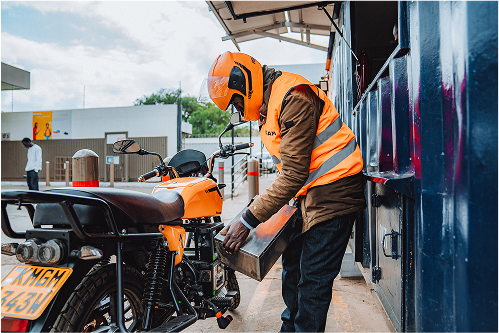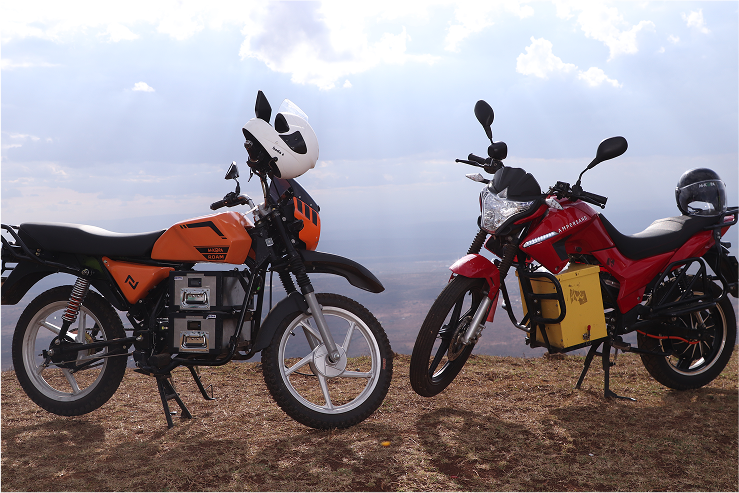At the heart of every electric motorcycle beats a vital energy source: the battery. This component not only powers your daily commute but also defines the efficiency, range, and ultimately the sustainability of your riding experience. Keeping the battery in optimal condition is crucial not only to ensure consistent and reliable performance but also to avoid the costs of premature replacement. In a landscape where sustainable mobility is becoming the norm, a well-maintained battery means a lower environmental impact and significant long-term savings.
This article will become your essential guide to caring for this crucial component of your electric motorcycle.
How the battery works
Below are the 2 most common battery technologies in electric motorcycles today.
- Lithium-ion (Li-ion) batteries
They are known for their high energy density, i.e. they can store more electricity in a smaller space. They also offer an excellent weight-to-performance ratio, allowing for longer trips before needing to be recharged. However, they require careful handling and sophisticated battery management systems (BMS) to prevent safety issues such as overheating.
- Lithium iron phosphate (LiFePO4) batteries
They stand out for their robustness and longevity. Although heavier and less energy-dense than Li-ion batteries, these batteries are remarkably stable and safe, better able to tolerate high temperatures and less prone to problems in the event of damage or malfunction.
Knowing the specifications of your electric motorcycle's battery is vital, as each type has different maintenance and charging requirements. Manufacturers often provide detailed guidelines on charging frequency, safe discharge levels, and optimal storage conditions to maximize battery life. It's essential to consult the owner's manual and follow the manufacturer's recommendations for charging and maintaining the battery.
How to charge your electric motorbike
Proper charging is essential to maintaining the health of your electric motorcycle's battery. This includes using the charger provided or one that meets the appropriate technical specifications, as well as respecting the recommended charging times and levels.
It is advisable to keep the battery within an optimal charging range, generally between 20% and 80% of its total capacity. This practice, known as partial charging, can help extend battery life by avoiding the stress of maintaining it at its maximum capacity or allowing it to fully discharge. Additionally, it is beneficial to establish a charging frequency that avoids complete charge and discharge cycles. It is often recommended to charge the battery after use, even if it has not been fully consumed, to keep it within its optimal range.
For Lithium-ion batteries, avoiding deep discharge is crucial because when they are completely drained, they can suffer irreversible damage that reduces their ability to hold a charge. Similarly, overcharging can cause an increase in the battery's internal temperature and pressure, which could result in a deterioration in performance and, in the worst case, pose safety risks.
Tips to extend the battery life of your electric motorcycle
Don't fully discharge it
It's not advisable to take the battery to the dreaded "0%" level. Nothing harmful will happen, but you shouldn't get into the habit of taking the battery to this extreme, and if it does happen, you should avoid letting it go too long without recharging.
Don't leave it plugged in all the time
Although chargers have a safety system that cuts off charging when it detects that the battery is fully charged, it's best to unplug the charger once it's fully charged to prevent any problems with the charger or the power grid from affecting the battery. You can use timers to avoid leaving the battery plugged in for extended periods.
Allow the battery to cool before charging
If you've ridden a lot of miles on your motorcycle, the battery may have increased temperature due to operation. It's a good idea to let it cool down to room temperature before charging.
Do not expose the battery to temperatures above 30°C
It is not recommended to expose the battery to temperatures above this level for extended periods. The optimal operating temperature for lithium batteries is close to 0°C.
Perform a full charge cycle every 1 or 2 months
This will ensure the battery is calibrated correctly and prevent it from giving us false information about the available charge.
Avoid overusing sport mode
The increased energy demand for extended periods can cause overheating, which in turn reduces battery life.
Prolonging your freedom
An electric motorcycle is much more than a means of transportation. It's a statement of intent: you're looking for efficiency, sustainability, and a way of getting around that's aligned with the future. But for that vision to work long-term, you must take care of its most valuable component: the battery.
With the habits shared in this article, you'll not only optimize its daily performance, but you'll also ensure that your electric motorbike will continue to offer you the same reliability and autonomy for many years to come.
If you haven’t gotten one yet, consider getting an M-KOPA electric motorbike. Contact us for more details.














.svg)




